The Most Venomous Snakes Of Florida
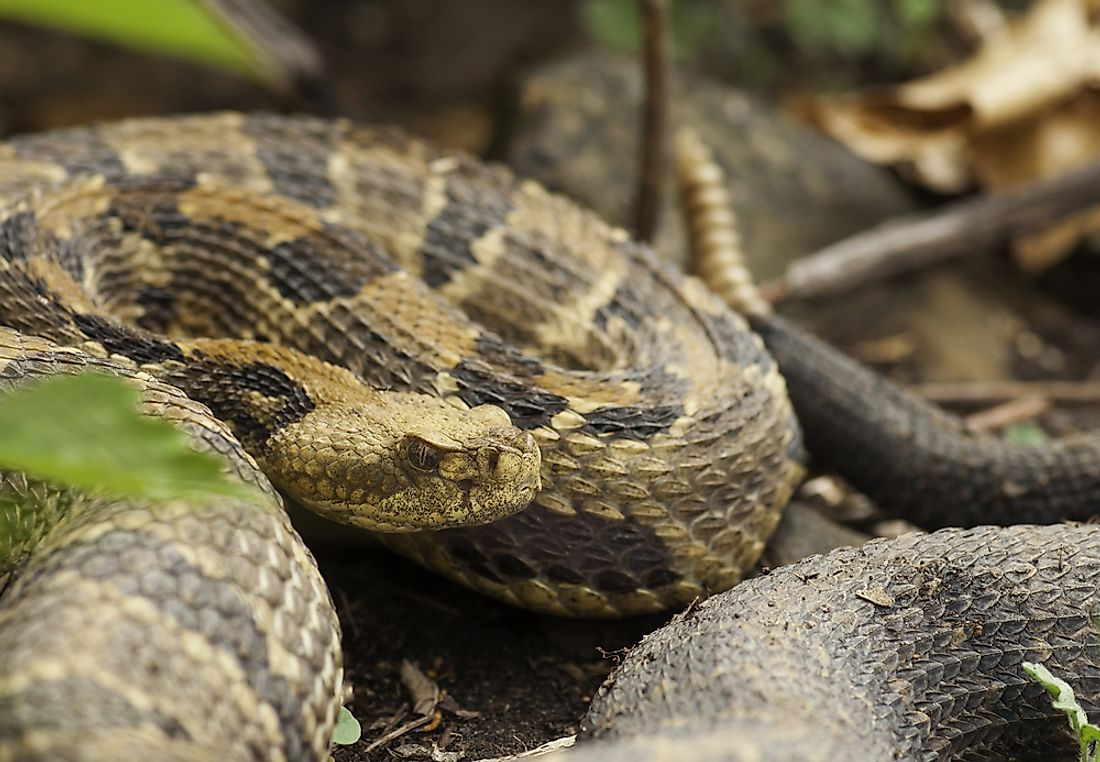
The warm climate of Florida, US, favors the existence of a number of snake species. While most of these species are non-venomous, there are six species of venomous snakes in the state. The latter group can be divided into two main types, the pit vipers, and the eastern coral snake. A brief description of the venomous snakes of Florida is provided below:
6. Florida Cottonmouth
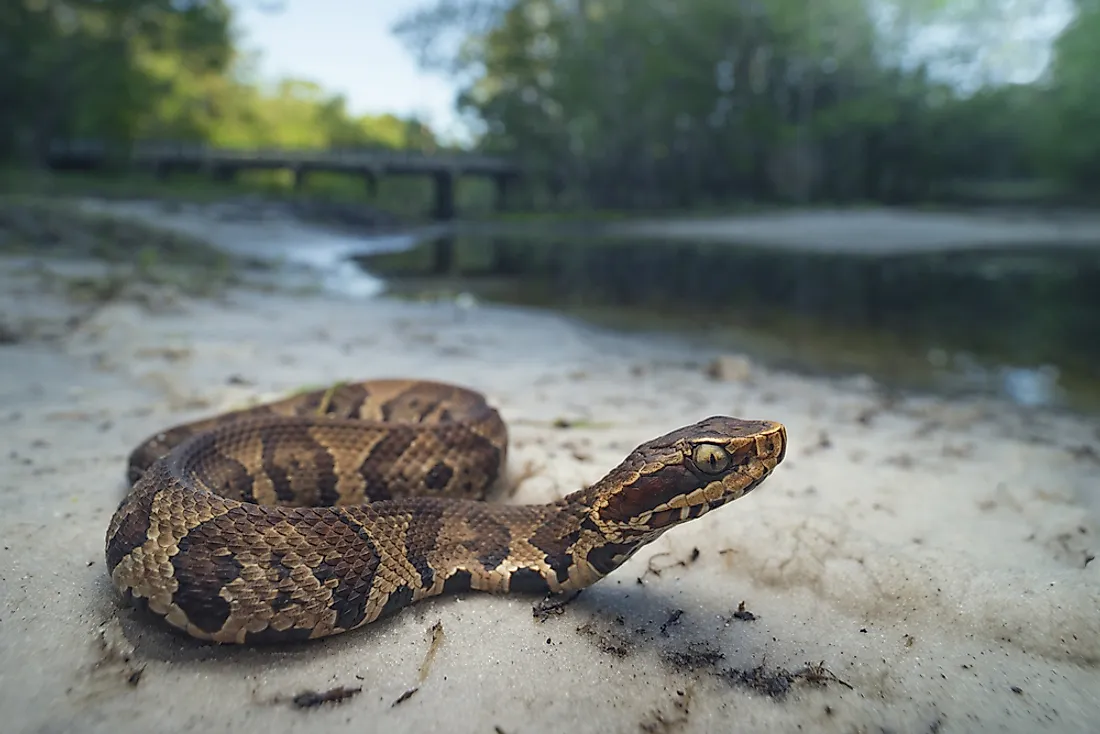
The Agkistrodon piscivorus conanti is one of the most venomous snakes found in Florida. This pitviper snake is also known by the name green-tailed moccasin. The Florida cottonmouth can attain lengths of up to 1,892 mm. The range of this species includes most parts of Florida and some parts of Georgia and South Carolina. It is also found in some of the offshore islands in the region. Its habitat includes swampy regions, wooded regions along watercourses, and along the edges of cypress ponds. Births of these snakes are most common during the summer. One to 15 snakes are born in one litter. The snake produces a powerful cytotoxic venom that causes great damage to tissue. Although deaths are rare, amputations might be required in some severe cases of bites in humans.
5. Eastern Diamandback Rattlesnake
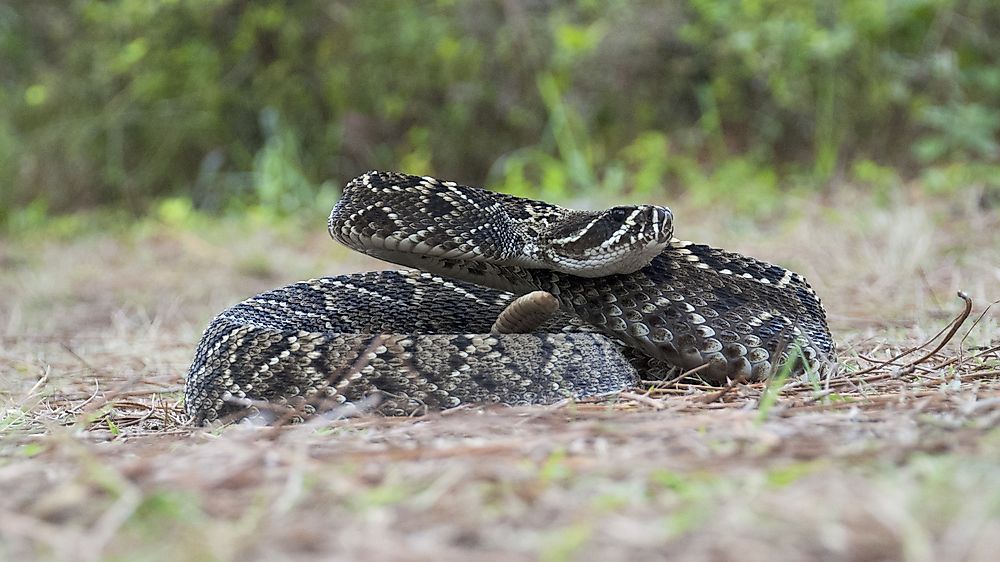
The Crotalus adamanteus is a species of pit viper that is found in Florida and some other parts of southeastern US. It is regarded to be the heaviest venomous snake in the country. It is also the largest species of all the rattlesnakes. The maximum length of this species has been recorded to be 8.25 ft. The eastern diamondback lives in a wide variety of habitats including marshes and swamps, dry pine forests, sandhills, wet prairies, and others. The species is primarily terrestrial and is not good at climbing trees. However, it is an excellent swimmer. The species usually inhabit the burrows in the ground that are dug by other animals. Small mammals like rats and rabbits comprise the bulk of their diet. Although not very aggressive, the powerful build of the snake makes it one of the most dangerous snakes in Florida. The mortality rate associated with the bite of this snake is between 10% to 30%. It possesses the longest fang of all species of rattlesnakes. The cytotoxic venom produced by this snake rapidly destroys tissue in the victim. Cardiac failure might kill the victim if treatment is not delivered early.
4. Timber Rattlesnake
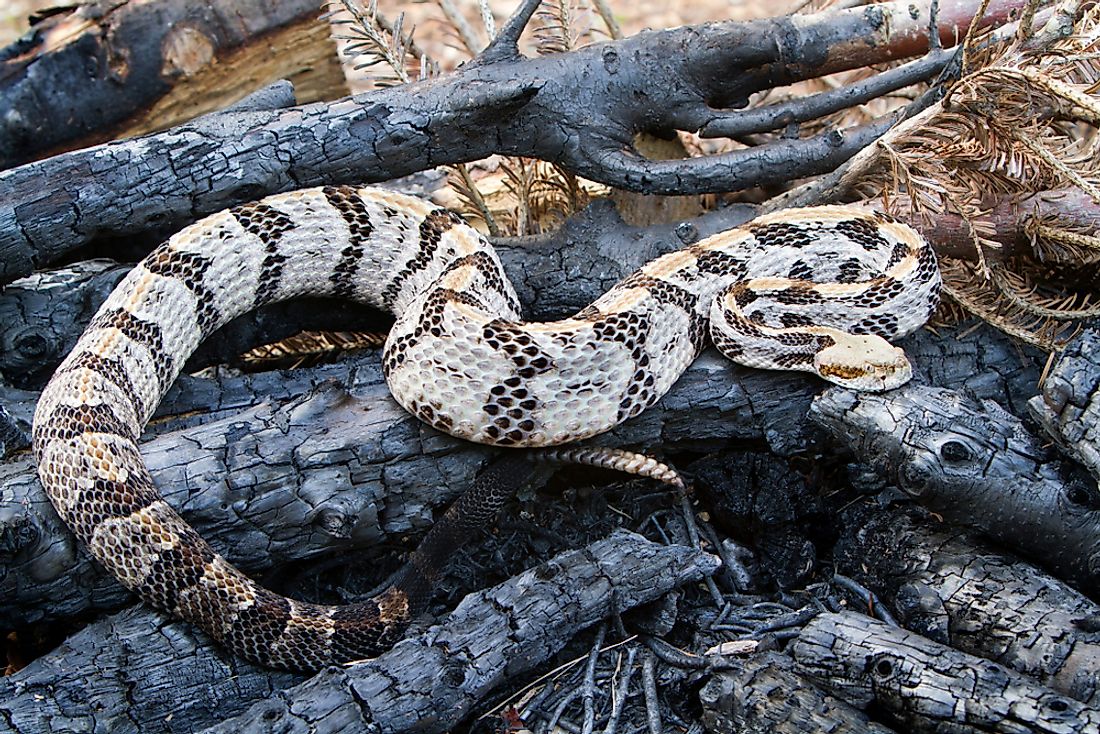
The Crotalus horridus is a venomous pit viper, one of the most venomous snakes of Florida. The range of this snake includes parts of the northeastern and southeastern US. It is one of North America’s most northerly distributed snakes. The timber rattlesnake prefers to inhabit deciduous forests in rugged terrain. Small mammals, birds, and amphibians comprise their prey. The snake’s high venom yield, long fangs, and big size make it one of the most feared snakes in Florida. The composition and potency of the venom of this species exhibit high geographic variation and a bite by this snake can prove to be lethal if treatment is not delivered rapidly.
3. Dusky Pygmy Rattlesnake
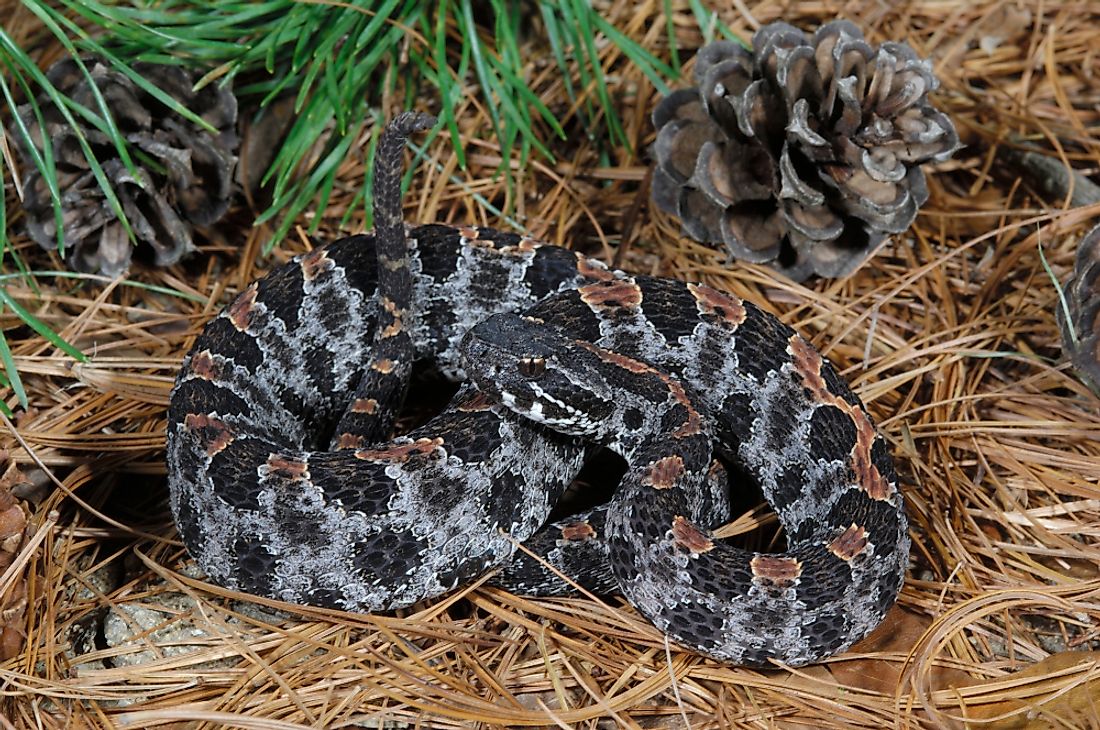
The Sistrurus miliarius barbouri is endemic to the southeastern US. It ranges throughout Florida. The species live in habitats ranging from flatwoods to prairies, swamps, and marshes to along water bodies like ponds and lakes. The snake is known to protect itself against threats and often such acts might lead to bites. Although some rare cases have been fatal, bites from this snake are usually not lethal but very painful and might demand amputation. The snake prefers to feed on amphibians and small mammals, especially rats.
2. Eastern Coral Snake
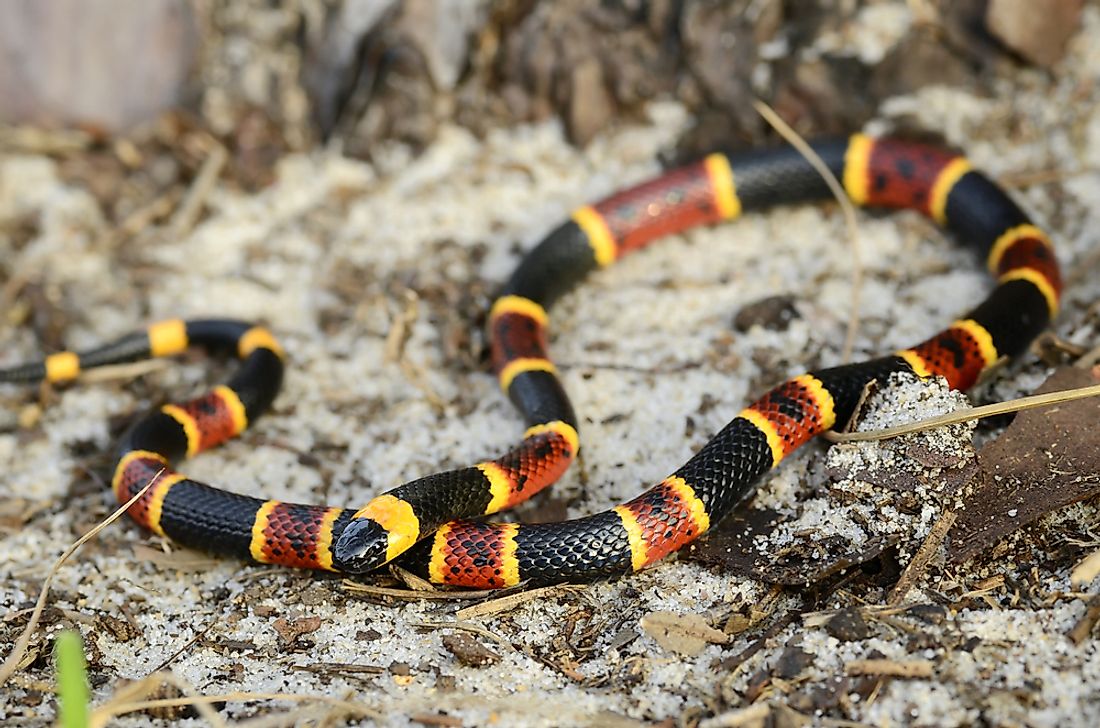
Another venomous snake of Florida, the Micrurus fulvius belongs to the Elapidae family. It is found in large parts of southeastern US. The range of this species varies from close to sea-level to altitudes of up to 1,300 ft. The habitat of this species includes tropical and mesophytic hammocks in Florida. Lizards, smaller snakes, and frogs constitute the main parts of the diet of this snake. Fatalities from the bite of the eastern coral snake are extremely rare with the most recent one happening in 2006. The snake has a secretive nature and generally does not bite. Despite the low fatality rate, the snake’s venom is potent enough to kill several adult humans. The low volume of venom injected with each bite and the high frequency of occurrence of dry bites are responsible for the low fatality rates associated with the venom of this snake.
1. Southern Copperhead
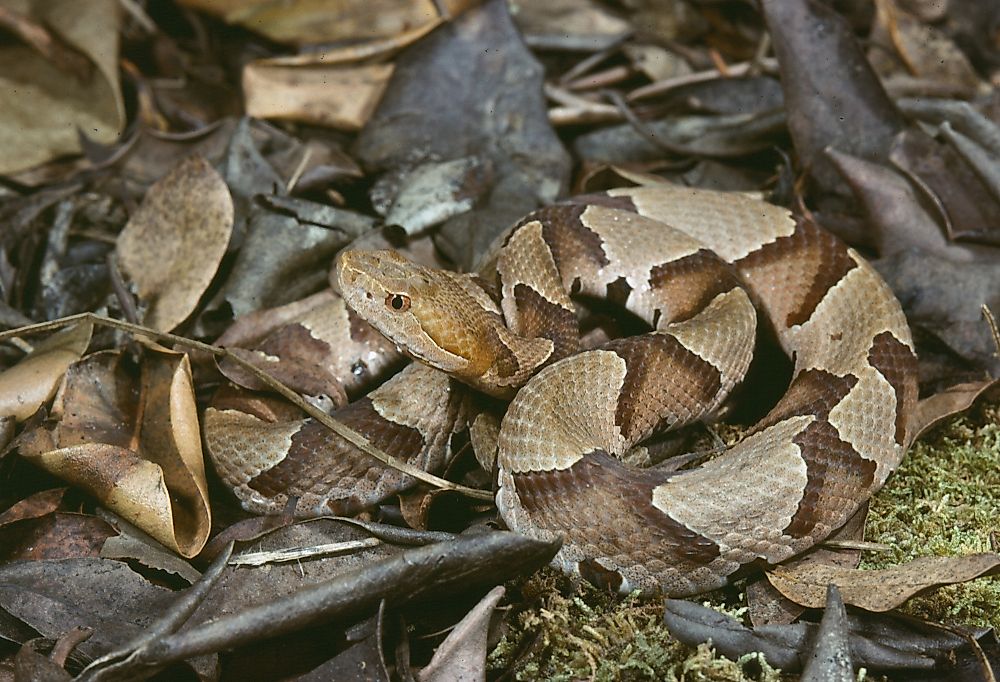
Another one of the venomous snakes of Florida, the Agkistrodon contortrix contortrix is a pitviper species whose range includes large parts of southern and eastern US. These snakes prefer to live in wooded and mixed pasture lowlands. The diet of the copperheads consists of rats, mice, frogs, lizards, cottontails, swamp rabbits, etc. The snakes are diurnal in nature during spring and late fall but are nocturnal during summers.











